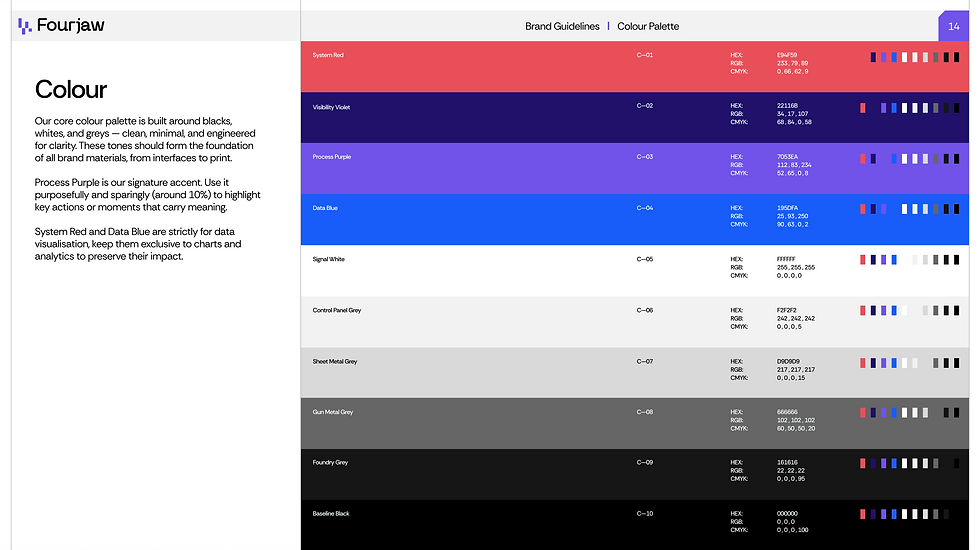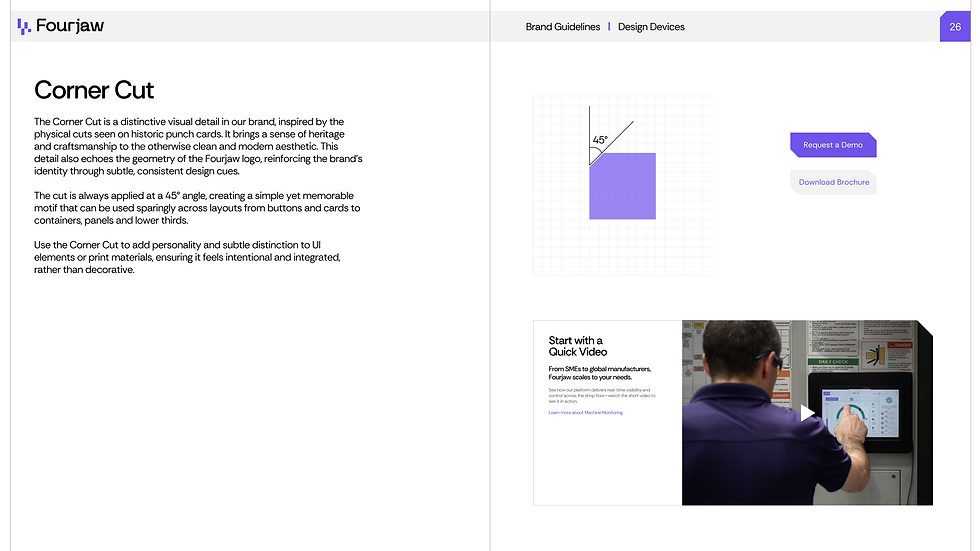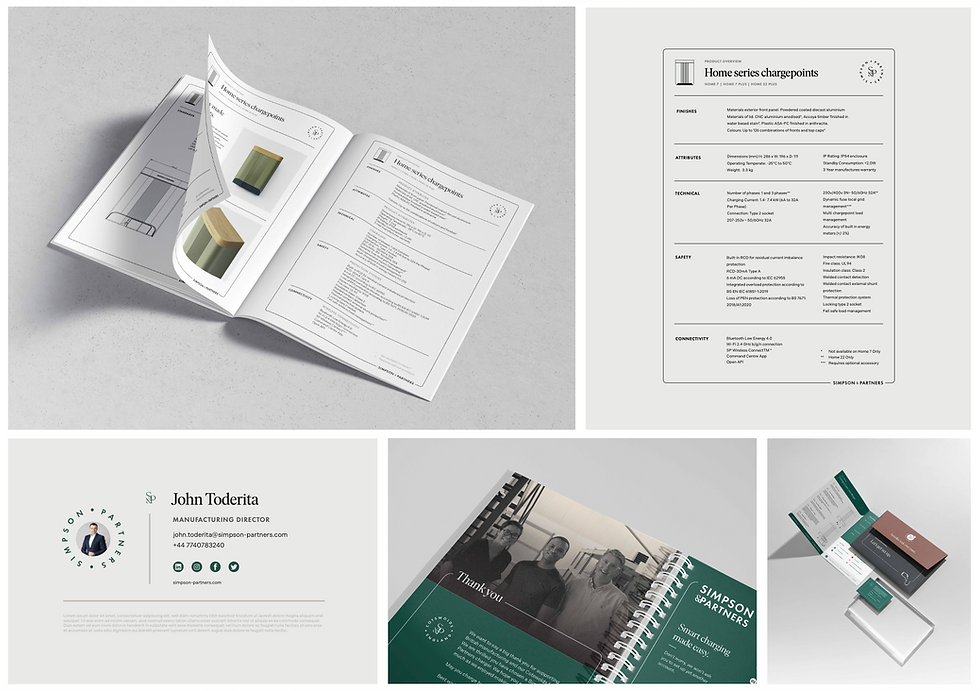What Should Be Included in Brand Guidelines? (With Examples)
- Amy Caulfield

- Aug 12
- 2 min read
Whether you’re building a brand from scratch or scaling something that already exists, brand guidelines are what make your identity work. They're how your team - and everyone you collaborate with - keeps things sharp, consistent, and recognisable across every touchpoint.
In this guide, we’ll break down exactly what to include in your brand guidelines, with examples of how smart brands get it right.
What Are Brand Guidelines?
Brand guidelines (sometimes called brand books or identity systems) are a set of rules that define how your brand looks, sounds, and behaves.
They help internal teams, external partners, agencies, and freelancers all speak the same visual and verbal language - whether they’re designing a billboard, building a pitch deck, or filming a founder interview.
What Should Be Included in Brand Guidelines?
Here’s what your brand guidelines should cover:
1. Brand Overview
Mission
Vision
Values
Brand story / purpose
Personality / tone of voice pillars
This gives everyone context before diving into design. The why behind the brand matters.

2. Logo System
Primary logo
Alternate versions (horizontal, vertical, stacked)
Clear space & sizing rules
Dos and don’ts
Your logo should be flexible, protected, and always shown in the best light.

3. Colour Palette
Primary and secondary colours
HEX, RGB, CMYK, Pantone values
Colour ratios or usage examples
Consistent colour usage makes your brand more memorable and professional.

4. Typography
Heading styles and body fonts
Hierarchy and pairings
Usage guidance (digital, print, motion)
Typography affects tone, clarity, and legibility. Get it right, and your brand feels considered.

5. Visual Language
Graphic elements (lines, shapes, patterns)
Photography style
Illustration or icon style
Layout grids / spacing rules
This is the secret sauce - what makes your brand feel like your brand.

6. Tone of Voice
Brand voice principles
Writing examples (website, social, emails)
Words to use / avoid
How you speak matters as much as how you look. Great brands sound intentional, not generic.

7. Motion & Interaction (Optional, but increasingly key)
Animation style
Motion behaviours (how logos animate, transitions, loading states)
UX micro-interactions
If you work in digital or film - this is no longer optional.
8. Examples in Action
Mockups (website, social, decks, merch, packaging)
Templates or starter assets
Show, don’t just tell. Guidelines work best when you demonstrate the brand in use.

What Makes Good Brand Guidelines?
Good guidelines are:
Clear, concise, and easy to use
Visually aligned with the brand they represent
Built to scale across touchpoints
They’re not just for designers. They're for your team, your investors, your producers, and your future hires.
Need Brand Guidelines That Actually Get Used?
At VMV.STUDIO, we don’t just design brand identities - we build living systems. Our guidelines are crafted for real-world use across design, film, and content.
We create:
Identity systems built for scale
Editable brand kits & team templates
Guidelines that cover visuals, voice, and motion
We offer:
Project-based brand work (from £16,000)
Tether monthly creative support (from £4,000/month)
Want to build a brand system people actually follow? Let’s talk →
Kommentare